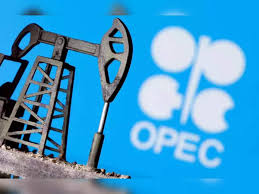OPEC+ countries announced on Wednesday that they would keep their official oil production quotas unchanged, maintaining the current output policy agreed upon in their December meeting. This means the group is sticking with a 2 million barrels per day cut for all members, which will remain in place until the end of 2026.
While the full OPEC+ alliance is sticking to the formal production strategy, attention is now shifting to voluntary oil production cuts made by eight major countries within the group. These countries include Saudi Arabia, Russia, the UAE, Iraq, Kuwait, Oman, Algeria, and Kazakhstan.
Key Eight Members Gradually Increasing Output
This eight-member subset has been operating under separate voluntary OPEC+ oil production cuts totaling 1.66 million barrels per day. These voluntary cuts were extended through the end of 2025.
Additionally, the same countries had also implemented a temporary reduction of 2.2 million barrels per day that lasted through March of this year. Since then, they have started to gradually bring that oil back to the market. Over April, May, and June, they are expected to restore about 1 million barrels per day, with plans to reassess further production changes soon.
Concerns Over Quota Compliance Among Some Members
There are growing concerns within OPEC+ about some members not sticking to their output limits. Countries such as Kazakhstan, Iraq, and Russia have previously been flagged for going over their agreed quotas.
UAE’s Energy Minister, Suhail Mohamed al-Mazrouei, stressed the need for collective effort, saying, “This group is doing its best, but it’s not enough. We need the help of others.”
OPEC+ Calls for Review of Production Capacity
To ensure future compliance, OPEC+ has now requested the OPEC Secretariat to evaluate each country’s sustainable production capacity, which will be used to establish new output baselines for 2027. These new figures will guide how much each country is allowed to produce under OPEC+ rules.
The next ministerial meeting is scheduled for November 30, where further decisions may be made based on updated supply and demand data.
Oil Prices React Positively to OPEC+ Oil Production Cuts
Following the announcement, oil prices edged upward. Brent crude for July delivery rose to $65.06 per barrel, up 1.5% from the previous day. Meanwhile, WTI futures climbed 1.76% to $61.96 per barrel.
These movements come as oil demand begins to rise with the start of the summer season, which traditionally sees more travel and greater use of air conditioning in countries like Saudi Arabia and the UAE.
Market Outlook: Balanced but Cautious
UBS strategist Giovanni Staunovo described the current oil market as “closely balanced,” with rising demand offsetting what was previously forecasted as a large supply surplus.
“With demand seasonally rising and the eight OPEC+ member states with additional voluntary cuts likely still adding more barrels to the market in July, we look for oil prices to move sideways in a USD 60-70/bbl range,” Staunovo noted in a report.
The UAE’s al-Mazrouei also cautioned that while demand is improving, under-investment in oil production could lead to surprises: “We need to be mindful of the demand. Demand is picking up. And demand is going to surprise us, if we’re not investing enough.”
The OPEC+ oil production cuts remain firm under formal agreements, but voluntary output changes by key members may affect the market in the months ahead. With demand on the rise and output increasing slightly, oil prices are expected to stay within a steady range as the world enters the high-demand summer season.
For more such news, now you can keep yourself updated with 10X Times News every day.






